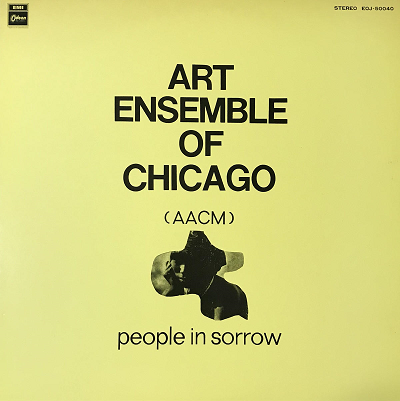1. Art Ensemble of ChicagoPeople in Sorrow

It’s incredible. And I feel like I don’t hear people talking about it as much as some of the other works. Obviously there was this sort of resurgence in the early aughts with all the BYG Actuel reissues and the records they did on America. People In Sorrow was released in 1969 on the French Pathé-Marconi label then reissued by Nessa, which Lester Bowie and Roscoe Mitchell had done solo records on. All this stuff that they were doing at that time. Later on they did some stuff on ECM, and they had some records on Atlantic. People In Sorrow, it’s an early one. And that particular record, that composition, for me lives in a slightly different place. I think as an ensemble, it was congealing in a way that leaned a little more into what was happening in classical music in the 20th century, at that time. Maybe the instrumentation was slightly different and the usage of voices was slightly different, but it’s a monster of a record. It’s so beautiful.
Would you say the ethos of the Art Ensemble and AACM [Association for the Advancement of Creative Music, the Chicago collective they were part of], the Ancient to the Future concept, is something that’s inspired you?
Absolutely. And I feel like a lot of these records lean into the investigation of the diaspora, which, for me, as a black artist, is something that’s extraordinarily compelling. There was a lot of that happening, of course, but this record in particular really hit for me. It is what I would consider advanced music. Everything on this list I would put in the realm of the exploration of advancement.


